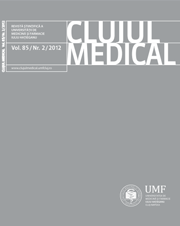Selenium Content in Foodstuffs and its Nutritional Requirement for Humans
Keywords:
selenium, foodstuffs, nutritional requirement, dietary intakeAbstract
Selenium is an essential microelement; it acts as an antioxidant and immunomodulator and it is involved in the regulation of certain endocrine pathways. Selenium content in foodstuffs from different countries is given by categories: a) fruit, vegetables, mushrooms and spices; b) legumes, nuts, cereals and derivatives; c) meat, poultry meat, eggs and seafood; d) milk and dairy products and e) beverages and oils. Overall selenium content varies significantly between different categories of foodstuffs. Fruits and vegetables generally contain low levels of selenium, with some exceptions. Selenium content in meat, poultry, eggs and seafood is generally high. Legumes, cereals and derivatives are the main contributors to the dietary selenium intake for most countries. For estimating selenium nutritional requirements, different criterias have been used. The first values regarding selenium requirements were established in 1989 in USA, followed by the 1996 WHO basal and normative requirements and the 2000 RDI from USA. For most countries, the daily selenium dietary intake exceeds the 1996 WHO requirements, with a few exceptions, such as Burundi, China (Shanxi province and other areas), Croatia, Greece, Poland, Turkey, United Kingdom. At present, in the case of some countries, there are no studies regarding selenium content in foodstuffs.
Downloads
Published
How to Cite
Issue
Section
License
The authors are required to transfer the copyright of the published paper to the journal. This is done by agreeing to sign the Copyright Assignment Form. Whenever the case, authors are also required to send permissions to reproduce material (such as illustrations) from the copyright holder.

The papers published in the journal are licensed under a Creative Commons Attribution-NonCommercial-NoDerivatives 4.0 International License.

